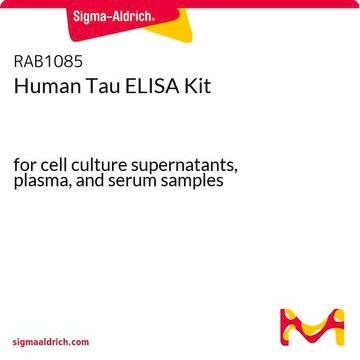GS05
GST S1-1, Recombinant Human
Synonym(s):
GSTS, GSTS1, PGD2, PGDS, hematopoietic prostaglandin D synthase
Sign Into View Organizational & Contract Pricing
All Photos(1)
About This Item
UNSPSC Code:
12352200
NACRES:
NA.26
Recommended Products
biological source
human
Quality Level
recombinant
expressed in E. coli
Assay
>95% (SDS-PAGE)
form
frozen liquid
specific activity
24.07
mol wt
23 kDa
concentration
0.9 mg/mL
storage temp.
−70°C
Gene Information
human ... HPGDS(27306)
General description
using spectrophotometric determination of 1-fluoro-2,4-dinitrobenzene (FDNB) conjugation with reduced glutathione (1 mM) in 100 mM NaPO4 (pH 6.5) at room temperature.
Biochem/physiol Actions
Glutathione S-transferase sigma 1, also know as hematopoietic prostaglandin D synthase (HPGDS) is an enzyme that in humans is encoded by the HPGDS gene. Glutathione S-transferases (GSTs) are a family of enzymes that play an important role in detoxification by catalyzing the conjugation of many hydrophobic and electrophilic compounds with reduced glutathione. Based on their biochemical, immunologic, and structural properties, cytosolic and membrane-bound forms of glutathione S-transferase are encoded by two distinct supergene families. At present, eight distinct classes of the soluble cytoplasmic mammalian glutathione S-transferases have been identified: alpha, kappa, mu, omega, pi, sigma, theta and zeta. The GSTs are thought to function in xenobiotic metabolism and play a role in susceptibility to cancer, and other diseases.
Prostaglandin-D synthase is a sigma class glutathione-S-transferase family member. The enzyme catalyzes the conversion of PGH2 to PGD2 and plays a role in the production of prostanoids in the immune system and mast cells. The presence of this enzyme can be used to identify the differentiation stage of human megakaryocytes.
Storage and Stability
The enzyme should be used by the end-user customer within 1 year of receipt.
Storage Class Code
10 - Combustible liquids
WGK
WGK 1
Flash Point(F)
Not applicable
Flash Point(C)
Not applicable
Certificates of Analysis (COA)
Search for Certificates of Analysis (COA) by entering the products Lot/Batch Number. Lot and Batch Numbers can be found on a product’s label following the words ‘Lot’ or ‘Batch’.
Already Own This Product?
Find documentation for the products that you have recently purchased in the Document Library.
Marcus Kjellander et al.
Analytical biochemistry, 446, 59-63 (2013-10-26)
The previously uncharacterized Drosophila melanogaster Epsilon-class glutathione transferases E6 and E7 were immobilized on nanoporous alumina. The nanoporous anodized alumina membranes were derivatized with 3-aminopropyl-triethoxysilane, and the amino groups were activated with carbonyldiimidazole to allow coupling of the enzymes via
Morten Hohwy et al.
Journal of medicinal chemistry, 51(7), 2178-2186 (2008-03-18)
We describe the discovery of novel inhibitors of prostaglandin D2 synthase (PGDS) through fragment-based lead generation and structure-based drug design. A library of 2500 low-molecular-weight compounds was screened using 2D nuclear magnetic resonance (NMR), leading to the identification of 24
Tsuyoshi Inoue et al.
Journal of biochemistry, 135(3), 279-283 (2004-04-29)
Hematopoietic prostaglandin (PG) D synthase (H-PGDS) is responsible for the production of PGD(2) as an allergy or inflammation mediator in mast and Th2 cells. We determined the X-ray structure of human H-PGDS complexed with an inhibitor, 2-(2'-benzothiazolyl)-5-styryl-3-(4'-phthalhydrazidyl) tetrazolium chloride (BSPT)
Brigette L Tippin et al.
Prostaglandins & other lipid mediators, 97(1-2), 22-28 (2011-08-09)
Intestinal tumors in Apc(Min/+) mice are suppressed by over-production of HPGDS, which is a glutathione transferase that forms prostaglandin D(2) (PGD(2)). We characterized naturally occurring HPGDS isoenzymes, to see if HPGDS variation is associated with human colorectal cancer risk. We
Our team of scientists has experience in all areas of research including Life Science, Material Science, Chemical Synthesis, Chromatography, Analytical and many others.
Contact Technical Service







